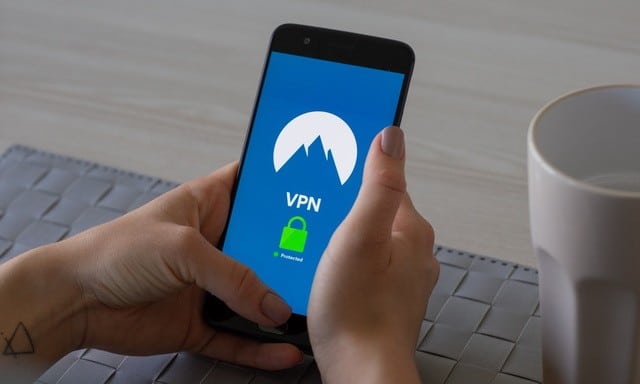How to use a VPN on iPhone and iPad
Even if you know next to nothing about VPNs, using one on your iPhone and iPad is pretty simple.
While you may have seen the VPN menu in the Settings app, there’s no need to venture out and configure settings – modern VPN apps do it all for you.
Obviously, we don’t need to tell you how to install an app on your iPhone or iPad, but we will share a few details that will make your first experience with a VPN totally simple.
What is a VPN and what does it do on an iPhone or iPad?
Before we get to that, here’s a quick rundown of why you’d want to use a VPN on your iPad or iPhone in the first place.
unlock
For most people, a VPN is an easy way to bypass region locks that prevent them from watching the videos they want to watch or using the websites they want to access. Some YouTube videos, for example, can only be viewed in certain countries, and as everyone knows, the shows and movies available on Netflix change depending on the country you are in.
Surprising as it may seem, even in the West some websites are blocked due to data regulations. For example, some US-based retailers block access to European visitors due to GDPR regulations. A VPN allows you to get around this problem and browse sites as if you were in the United States.
Privacy
A VPN encrypts the connection between your iPhone or iPad and the Internet. This gives you privacy because it prevents your ISP (and anyone else) from seeing the websites you visit and helps you stay anonymous on websites so they can’t track you (unless you log in, of course).
In this regard, there are some similarities to Apple’s iCloud Private Passthrough, which arrived with iOS 15 (and macOS Monterey) in late 2021. iCloud Private Passthrough is a feature for all paid iCloud (now iCloud+) subscribers. iCloud Private Relay is similar to a VPN in that it encrypts your web browsing and hides your location, IP address, and what you’re browsing. This encryption only happens when you use Safari, so if you use another browser, you won’t have the same protection. And of course, it won’t let you bypass location-based restrictions either.
Security
Public Wi-Fi usually allows you to connect without entering a password, which can be a bit risky because the connection isn’t encrypted. But a VPN provides encryption so you can safely use the Internet in airports, cafes, hotels, and other places. All trusted websites and web services provide their own encryption (and certainly banks and banking apps do), but using a VPN eliminates any risk of exposing sensitive information.
How to use a VPN on an iPhone or iPad
Now that you know what a VPN is for (if you haven’t already), here’s what you need to do to install one on your iPhone or iPad, and how to use it to disguise your location, hide your browsing habits, and protect your privacy and privacy. security.
Step 1 – Find a good VPN
First, you’ll need to find a VPN that’s right for you. We have some VPNs we recommend here: Best VPNs for iPhone and iPad, we also have an overview of the best VPNs for Mac. Recommendations for services that work on your Apple devices include Surfshark, NordVPN, and ExpressVPN.
Step 2: Set up your VPN
When you sign up for a VPN service, you can use it on multiple devices at once, not just iPhone or iPad. Apps are generally available for Windows, macOS, Android, and even TVs and streaming devices.
We use NordVPN as a specific example here, but while there may be slight differences in the placement of options and settings, the steps here apply to most VPN apps, not just Nord.
1. First, sign up and create an account on the VPN provider’s website.
2. Download NordVPN Application on your iPhone or iPad from the App Store.
3. Open the app and hit the SIGN IN button, then enter the account details you created in step 1.
4. You will be asked if you want to allow notifications. You can choose your preference: they are not essential.
5. Click the Quick Connect button.
6. You will be asked to give permission. Click I understand to approve.
7. You will see a message that NordVPN wants to add VPN settings. This is the auto setup part, so tap “Allow”.
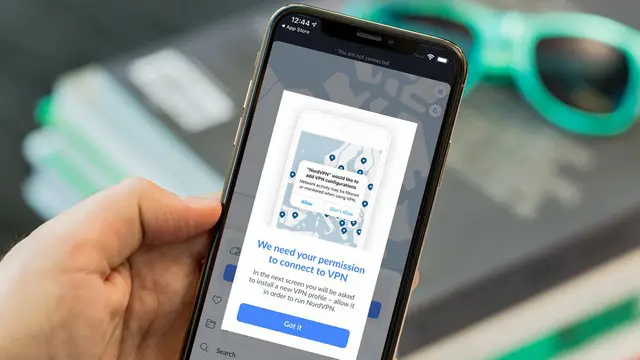
8. You may be required to enter your password, or Touch ID or Face ID will be used to grant this permission. This process allows NordVPN to set up a VPN profile that you can see if you then go to Settings > General > VPN.
9. The app should connect you to a server, automatically chosen by the Quick Connect feature. It is usually in the same country as you.
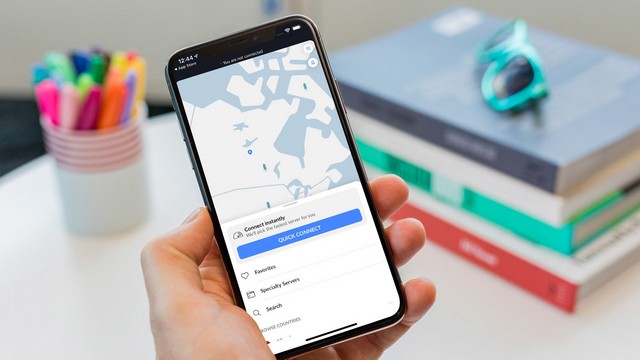
10. As long as the connection is active, all Internet traffic from your iPhone will be encrypted and routed through this server.
11. You can now switch to other apps and everything should work normally, although some banking apps may not work as they provide encryption, so you should not use a VPN when using your banking apps.
How to fake your location with a VPN
If you want to pretend to be browsing from another country so that you can watch videos or browse websites that are usually blocked for you, all you have to do is connect to a server in the country where that specific service, site or video is available.
Please note that not all VPN providers unblock all video services, so check if you want to unblock a specific service. Almost all of them unblock Netflix, Amazon Prime, HBO Max, and other popular ones, but it’s always worth checking before signing up.
Also note that you still need an account and usually an active subscription to the service you’re trying to watch. A VPN does not make Netflix or Disney+ free: you must be a subscriber in that country as well as your own.
Using a VPN to watch blocked videos will also likely violate some of the terms and conditions of those services. We haven’t yet heard of any paying customers whose video streaming accounts have been suspended or even closed, but that doesn’t mean it can’t happen.
Here is an example of how someone in the UK can unblock US Netflix.
1. In your VPN application, search the list of countries (the servers).
2. With NordVPN, you can simply swipe across the map until you can see the United States and tap on one of the pins.
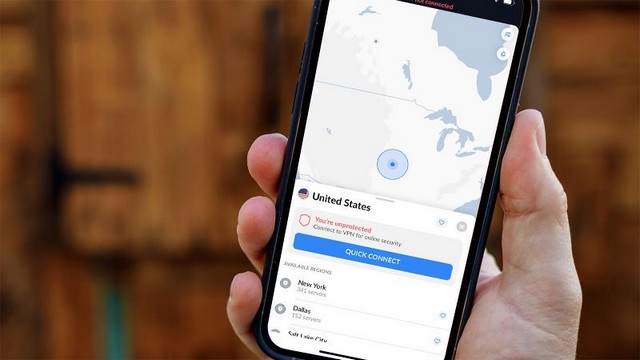
3. You will see a dialog box with the name of the selected country, an on/off switch icon, and the option to choose a server. Simply press the on/off button to connect to this server.
4. Wait for it to connect, which should only take a few seconds.
5. Now when you browse the web using Safari or another app, sites and services will behave as if you were in that country. So prices will be displayed in the local currency and you should be able to access sites and videos that were previously blocked.
6. You will see a VPN icon on the top right of your iPhone screen when the connection is active.
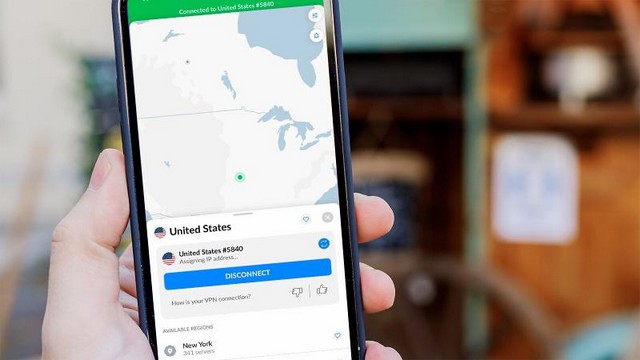
How to disable a VPN on an iPhone or iPad
If you just want to stop using the VPN, disconnecting is a simple process:
1. Open the NordVPN app (or whatever service you use).
2. Touch Disconnect.
3. A not connected message will appear and the iOS VPN icon will disappear.
You can also disconnect from the VPN in this way:
1. Go to Settings > General.
2. Scroll down to VPN.
3. Tap the toggle switch next to Status to sign out.
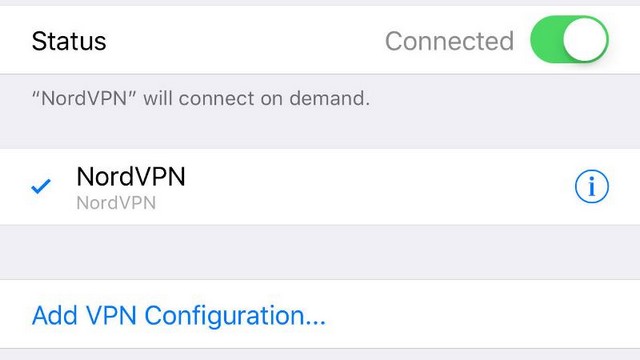
4. Optionally, tap the (i) icon next to VPN settings, then tap the switch next to Connect on Demand to stop the VPN connection in the future.
If you have any questions or suggestions, let us know in the comments. Also check out this guide if you want to learn how to set up a VPN on Android.





